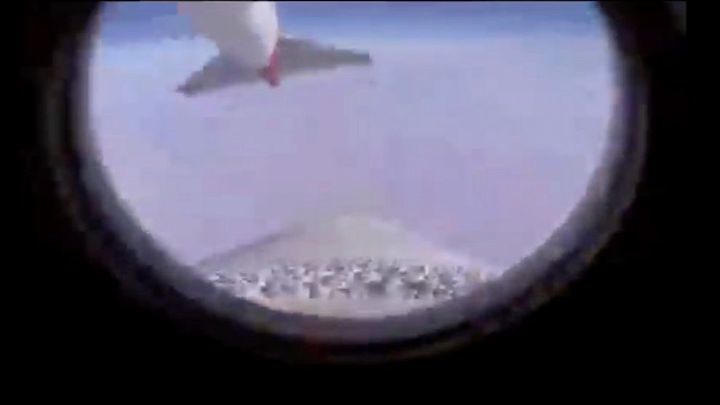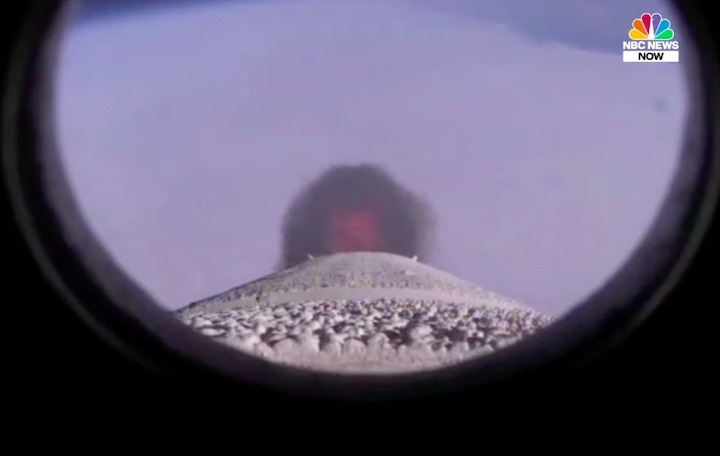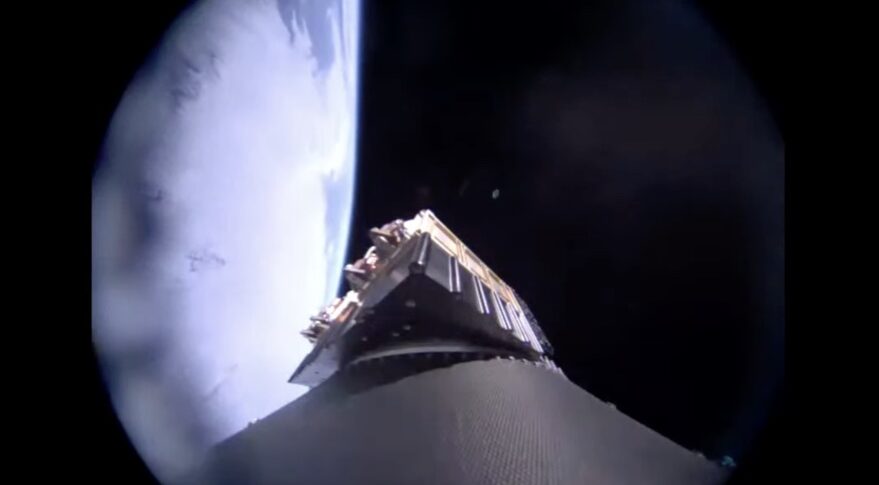2.07.2021
Richard Branson's Virgin Orbit has delivered satellites from three countries into space

In this image from video made available by Virgin Orbit, the tail of a modified 747 jet is seen from the LauncherOne rocket as it separates from underneath the aircraft's wing over the Pacific Ocean, during a mission to deliver satellites from three countries into space on Wednesday, June 30, 2021.
Richard Branson’s Virgin Orbit delivered satellites from three countries into space Wednesday, its second successful rocket launch from a plane.
The company’s modified 747 jet dubbed Cosmic Girl jet took off from California’s Mojave Desert, carrying the 70-foot (21-meter) rocket beneath its left wing. Once the plane was over the Pacific near the Channel Islands, the LauncherOne rocket peeled away, then fired its engine to head to space. The drop occurred at an altitude of about 37,000 feet (11,000 meters).
Camera views showed the package of seven small satellites on the end of the second stage, against the curve of the blue Earth. The satellites are from the U.S. Defense Department, the Royal Netherlands Air Force and Poland’s SatRevolution company, which is working to set up an Earth-observing constellation.
Virgin Orbit later declared success, saying the satellites were in the proper orbit.
Branson — whose Virgin Galactic company is close to launching paying customers to the edge of space — planted a kiss on the cheek of Virgin Orbit CEO Dan Hart, once the satellites reached orbit.
“It's a pinch yourself moment,” Branson said. “Cheers! Well done, everybody.”
In an interview later with The Associated Press, Branson declined to say whether he will be on Virgin Galactic’s next test flight to space — or the one after that as originally planned. The company plans three more test flights of its rocket ship this summer and fall before taking paying passengers next year.
“All I can say is when the engineers tell me that I can go to space, I’m ready, fit and healthy to go,” Branson told the AP. “So we’ll see.”
Virgin Orbit sent its first batch of satellites into orbit in January; the 10 NASA-sponsored satellites were designed and built by universities. A flight demo last year was unsuccessful.
Virgin Orbit said its air-launched system can put satellites into orbit on relatively short notice, compared with the more traditional way of launching rockets from the ground. Branson hopes to make satellite launches “almost routine” from the Mojave Air and Space Port.
The company's next launch is planned for this fall, according to Hart.
Branson named Wednesday's mission Tubular Bells after the music made famous in the 1973 horror film “The Exorcist.” It was the first album put out by Virgin Records.
A few hours later, SpaceX launched a rocket from Cape Canaveral, carrying 88 mini satellites to a rare polar orbit.
Quelle: abcNews
+++
Virgin Orbit sends satellites into orbit from air-launched rocket

Virgin Orbit launched seven satellites into orbit Wednesday, marking its first commercial mission.
Virgin Orbit's aircraft, a Boeing 747 better known as Cosmic Girl, took flight shortly after 9:50 a.m. ET from the Mojave Air and Space Port, about 100 miles north of Los Angeles.
After reaching its drop-off point about an hour after takeoff, the company's LauncherOne rocket separated from the aircraft and carried the seven small satellites from three different countries, including the United States, Poland and the Netherlands, into Earth's orbit.
The rocket launch is the first part of Virgin Orbit's "Tubular Bells" mission, which is named after the first track on Mike Oldfield's 1973 titular album — the first record released by Richard Branson's Virgin Records.
"Tubular Bells: Part One" also marks the first mission since the company's successful orbital demonstration launch in January.
Instead of a traditional launch pad, the Virgin Orbit system uses a modified Boeing 747-400 aircraft to launch a rocket from under the wing of its carrier plane, according to its website. The engines are then ignited and the rockets power themselves into orbit.
Of the seven satellites, four belong to the U.S. Department of Defense's Space Test Program, two to the Polish company SatRevolution, and one to the Royal Netherlands Air Force.
Quelle: NBC News
+++
Virgin Orbit launches cubesats on second operational mission

WASHINGTON — Virgin Orbit’s LauncherOne successfully launched seven cubesats June 30 in the second operational mission of the air-launch system.
Virgin Orbit’s Boeing 747 aircraft, called Cosmic Girl, took off from Mojave Air and Space Port at approximately 9:50 a.m. Eastern. It flew to its drop point over the Pacific Ocean off the coast from Southern California, releasing the LauncherOne rocket at 10:47 a.m. Eastern.
The rocket’s two stages performed as expected, placing the upper stage into orbit. After a coast phase, the upper stage reignited its engine for a second burn and then released its payload of seven satellites about 40 minutes after first-stage ignition into 500-kilometer orbits at an inclination of 60 degrees, although the company didn’t provide formal confirmation of successful deployment until about two hours later.
“The team did a phenomenal job,” Dan Hart, chief executive of Virgin Orbit, said on the company webcast of the launch during the upper stage’s coast phase. “Every single countdown has its own personality. This one had a couple of little, tiny turns along the way. The team just jumped on those, resolved them quickly.”
The seven satellites on the “Tubular Bells: Part One” mission come from three customers. Four unnamed satellites are from the Defense Department’s Space Test Program, under a contract that is part of the DOD’s Rapid Agile Launch Initiative.
Two satellites, STORK-4 and STORK-5, were built by SatRevolution, a Polish smallsat developer planning a constellation of satellites for medium-resolution multispectral imagery. Virgin Orbit announced June 29 that it has signed a memorandum of understanding with SatRevolution that could lead to launches of future satellites.
The seventh satellite is BRIK 2, a six-unit cubesat for the Royal Netherlands Air Force developed by Dutch company Innovative Solutions in Space. The satellite, the first for the Dutch military, will test communications technologies and demonstrate how cubesats can support Dutch military operations.
This was the third LauncherOne mission and the second consecutive successful one. After the first LauncherOne mission, a demo flight without payloads, failed to reach orbit in May 2020 because of a ruptured propellant line, the second launch in January successfully placed 10 cubesats into orbit on a NASA-funded mission.
Hart said in a June 29 call with reporters that he expected to perform at least one more LauncherOne mission this year, again out of Mojave. He said Virgin Orbit will accelerate operations in 2022 with six launches expected, including flights from Guam and England.
“Today is Virgin Orbit’s day,” Richard Branson, founder of the Virgin Group, said on the company webcast. He, like Hart, was in Mojave to watch the takeoff of Cosmic Girl on the mission. “It’s now hopefully going to become almost routine.”
“There are so many people that need satellites in space,” he added, “and we’re going to be able to deliver.”
Quelle: SN

